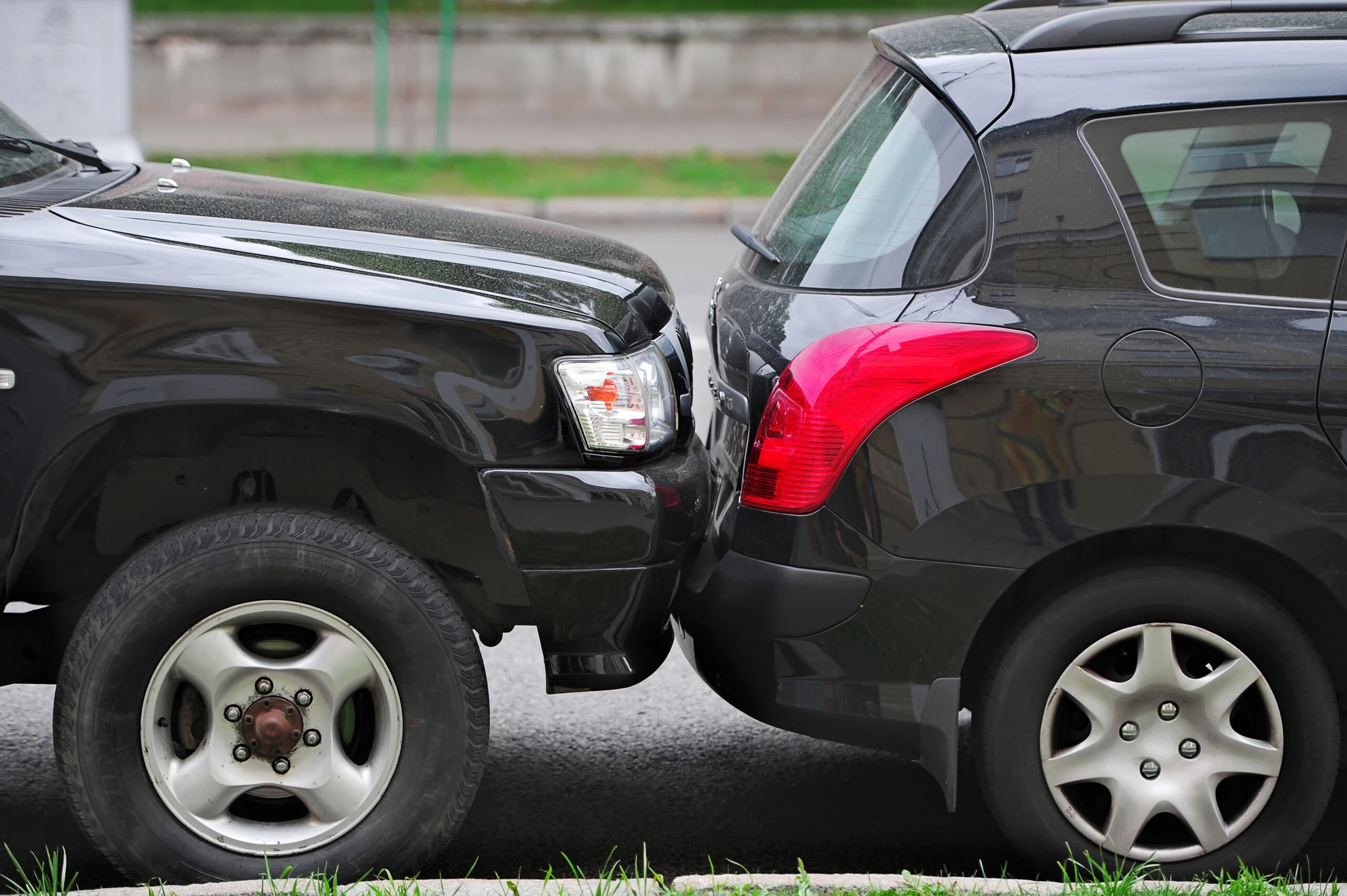At-fault states (or “tort states”) require the at-fault driver’s insurance company to pay for damages or injuries. To cover these costs, at-fault states require drivers to carry at least liability insurance—however, your car insurance premiums may increase by 36% after an at-fault crash.
What is an at-fault state?
In at-fault states, any driver who causes a car crash is personally liable—that is, financially responsible—for compensating accident victims. The at-fault system transfers the financial burden of car accidents to insurance companies, hopefully guaranteeing accident victims more compensation.
To determine fault, claims adjusters will speak to witnesses, look over police reports, and review accounts from both individuals involved in the crash. If you’re found responsible for causing the accident, your insurance will pay for damages and injuries up to your policy limits.
You may need more than the state minimum in an at-fault state
Most states require drivers to carry 25/50/25 in liability insurance—however, most drivers, especially in at-fault states, may benefit from higher limits. To ensure all your bases are covered, consider investing in limits of 50/100/50 or 100/300/100. That way, you can be sure that your assets and future finances are well-protected.
No-fault states vs. at-fault states
In no-fault states, car accident victims will contact their own insurance provider—not the at-fault driver’s insurance provider—for bodily injury compensation after a crash. Payment responsibilities in no-fault states fall on the insurance providers of everyone involved, not just the at-fault driver’s provider.
No fault states include: FL, HI, KS, KY*, MA, MI, MN, NJ*, NY, ND, PA*, UT
* Drivers in these choice-no-fault states may choose no-fault or limited tort coverage.
How do at-fault state laws affect auto insurance rates?
On average, drivers in at-fault states pay $103 per month for their policies—$63 per month for the state minimum, and $143 per month for full coverage.
Because at-fault state laws don’t typically require drivers to purchase additional types of coverage like personal Injury protection (PIP), it’s usually cheaper to buy car insurance in an at-fault state than a no-fault state. Here are the average rates for different types of insurance in at-fault versus no-fault states:
| Type of insurance | At-fault state | No-fault state |
|---|---|---|
| Minimum coverage | $64 | $89 |
| Full coverage | $147 | $172 |
After an at-fault accident, however, your insurance rates will see a sharper average increase in at-fault states. Here’s how much your insurance will increase on average after an accident based on which at-fault state you live in:
| State | Cost before at-fault accident | Cost after at-fault accident | % Increase |
|---|---|---|---|
| Alabama | $130 | $135 | 4% |
| Arizona | $111 | $244 | 55% |
| Arkansas | $110 | $139 | 21% |
| California | $133 | $187 | 29% |
| Colorado | $123 | $172 | 28% |
| Connecticut | $122 | $189 | 35% |
| Delaware | $124 | $157 | 21% |
| District of Columbia | $142 | $163 | 13% |
| Georgia | $194 | $242 | 20% |
| Idaho | $73 | $92 | 21% |
| Illinois | $90 | $134 | 33% |
| Indiana | $87 | $116 | 25% |
| Iowa | $79 | $97 | 19% |
| Louisiana | $185 | $242 | 24% |
| Maine | $58 | $78 | 26% |
| Mississippi | $106 | $123 | 14% |
| Missouri | $90 | $164 | 45% |
| Montana | $85 | $94 | 10% |
| Nebraska | $97 | $124 | 22% |
| New Hampshire | $67 | $86 | 22% |
| New Mexico | $126 | $146 | 14% |
| Nevada | $102 | $208 | 51% |
| North Carolina | $77 | $101 | 24% |
| Ohio | $78 | $112 | 31% |
| Oklahoma | $93 | $132 | 30% |
| Rhode Island | $102 | $161 | 27% |
| South Dakota | $89 | $94 | 5% |
| South Carolina | $166 | $203 | 18% |
| Texas | $142 | $193 | 26% |
| Tennessee | $104 | $155 | 33% |
| Vermont | $58 | $74 | 22% |
| West Virginia | $88 | $116 | 24% |
| Wisconsin | $84 | $106 | 21% |
| Wyoming | $59 | $78 | 24% |
Although you may see an increase after an at-fault accident, you can still lower your premiums using the Jerry app. With Jerry, you can compare quotes from dozens of top insurers, including GEICO and Progressive, to find the best rate for your profile.
Getting into a car accident in an at-fault state: What happens next?
If you get into a car accident in an at-fault state, you’ll have to file a car insurance claim with the at-fault party’s insurance company to get compensation for any damages.
Things that may help your claim include photos of the damages, witnesses, and exchanging information with other drivers at the scene. Then, report the car accident to your insurance company.
Remember, the more evidence of your innocence you provide, the more likely the adjuster is to find you not at fault, particularly if you are an injured party.
After a car accident in an at-fault state, your car insurance premiums may also increase. To combat this, it’s a good idea to shop around for a new policy from a new provider. With a car insurance broker like Jerry, this process takes less than a minute.
If you’re the at-fault driver: At-fault drivers should follow a similar process after an accident. Don’t admit fault or place blame on the other driver, and try to remain calm both at the scene of the accident and after. This will help you avoid any extra charges being brought against you.
Compensation is determined by negligence in at-fault states
In the legal sense of the term, negligence describes a failure to take appropriate action resulting in harm to others. This might include things like not seeing a pedestrian in the road, texting and driving, or hitting the gas instead of the brakes.
In a car accident, fault may be determined in percentages, i.e. one driver is 70% at fault while the other driver is 30% at fault, based on how negligent each driver was in the situation.
Once negligence and fault are established, compensation can be determined based on that data.
At-fault states give drivers the right to sue—here’s how to navigate it
Drivers who have experienced severe damages due to a negligent driver usually have the right to sue, but it’s best to employ a qualified personal injury lawyer or law firm to help you out.
Things can get extremely complicated when determining who can sue who after an accident. The validity of your personal injury lawsuit will depend on things like state laws, the amount of insurance the other driver was carrying, the amount of insurance you were carrying, and whether your damages passed a verbal (think “catastrophic injuries” or “wrongful death”) and/or economic threshold.
If you’re thinking about taking legal action against another driver, it’s recommended that you get a car accident lawyer to help you with these factors and other complicated elements of navigating the legal system.
Learn more: What to do if you’re in a car accident without insurance
FAQ
- What does it mean to be at fault in a collision?
- What US states are at-fault states?
- Can you claim insurance if the accident was your fault?

Liz Jenson is an insurance writer who specializes in general automotive and insurance topics. Liz’s mission is to produce informative and useful content to help car owners make smart choices when buying cars and car insurance. Since joining Jerry in 2021, Liz has written nearly 4,000 long- and short-form articles on topics including state-specific insurance recommendations, common car insurance questions, and deep dives into vehicle model details. Before they came to Jerry, Liz was a full-time student at Indiana University, Bloomington working on a double major in English and French.

Kianna Walpole is an insurance writer and editor with a comprehensive background in consumer behavior and online publishing. With experience in car insurance, maintenance, and repair, she is dedicated to building informative content that helps customers reduce costs while achieving the best service. Prior to joining the Jerry editorial team, Kianna worked as a junior editor in the content marketing industry, using consumer data and key insights to create and edit content for an array of large-scale clients in the real estate, cybersecurity, and healthcare industries.




